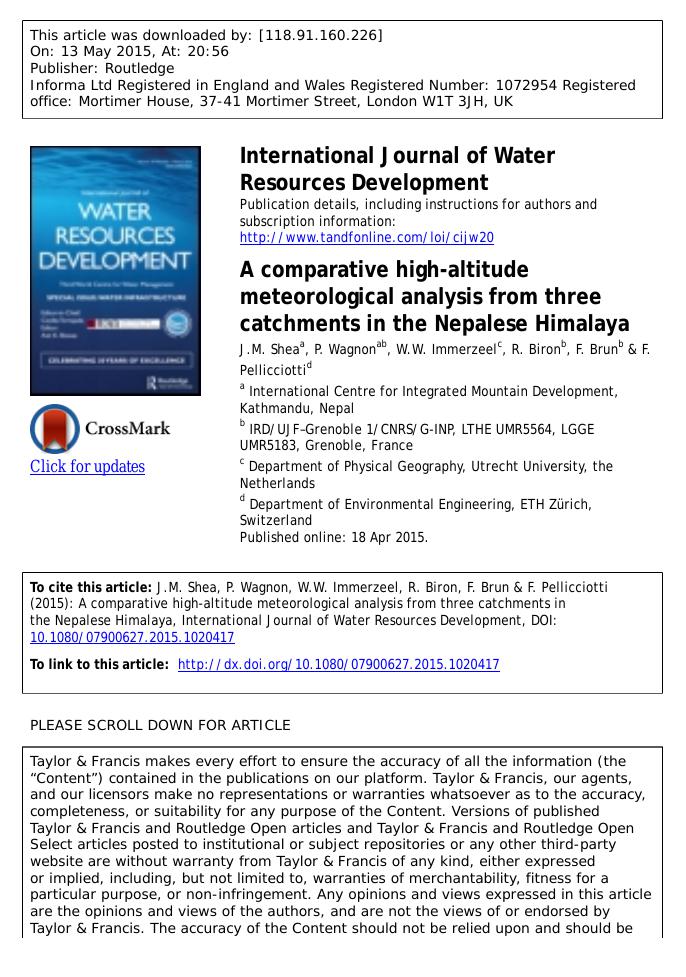Meteorological studies in high-mountain environments form the basis of our understanding of catchment hydrology and glacier accumulation and melt processes, yet high-altitude (>4000 m above sea level, asl) observatories are rare. This research presents meteorological data recorded between December 2012 and November 2013 at seven stations in Nepal, ranging in elevation from 3860 to 5360 m asl. Seasonal and diurnal cycles in air temperature, vapour pressure, incoming short-wave and long-wave radiation, atmospheric transmissivity, wind speed, and precipitation are compared between sites. Solar radiation strongly affects diurnal temperature and vapour pressure cycles, but local topography and valley-scale circulations alter wind speed and precipitation cycles. The observed diurnal variability in vertical temperature gradients in all seasons highlights the importance of in situ measurements for melt modelling. The monsoon signal (progressive onset and sharp end) is visible in all data-sets, and the passage of the remnants of Typhoon Phailin in mid-October 2013 provides an interesting case study on the possible effects of such storms on glaciers in the region.
